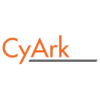Introduction: What is teh hook, the attention grabber, the interesting beginning?
As a preparatory activity, ask the students to bring in something that can be considered a scale model.
Class introduction: Begin with a discussion of what a scale model is. What are the various types of models and their uses in everyday life (prototypes, architectural models, toy figurines, etc.). Scale models help us visualize and study objects that are too large or too small to be easily studied at their actual size. Designs for large buildings are often produced in a scale model to give the client a clear visualization of what the building will look like once it’s completed. Automobile and other product designers also employ scale models before designs are finalized. Models of cells or body organs may be employed in a science classroom. In a field like historic preservation, a scale model can be a very useful tool to study the complex existing conditions of a structure. Begin with a discussion of what a heritage site is. Introduce students to Mount Rushmore as an American heritage site and discuss how the sculptor, Gutzon Borglum, decided to carve the heads of the four Presidents. Show two pictures of Mount Rushmore: before and after carving. The students should be able to have a discussion about the significance of human design and the significant ways in which we shape the world around us. With Mount Rushmore, what we have as a result is a monumental sculpture that took a great amount of human and material resources. How do we make sure that we’re taking care of an important heritage site like Mount Rushmore when there are forces like deterioration and destruction at play? To illustrate deterioration, use provided sample photos of deteriorating structures. Use the PDF entitled “Caring for a Monumental Sculpture” to introduce the students to the specific preservation concerns at Mount Rushmore. In order to come up with a plan to conserve a site, we would need to have an accurate record of it as our starting point. Use provided introductory videos to learn about digitally documenting heritage sites and the specific process used at Mount Rushmore. For more information, explore the CyArk website. As the very first step in laser scanning Mount Rushmore, the team constructed a rough scale model of the mountain based on old data to strategically plan where the scanners should be placed in order to capture the sculpture as fully as possible. Use provided photos for illustration.
Content:
Collect the materials necessary for the construction of the cardboard model and split up the responsibilities in a way appropriate to the size of the classroom and available class time. Use the provided PDF files of the model layers to trace and cut the required pieces. This version of the model is designed so that each layer’s thickness is equal to the thickness of corrugated cardboard. It is therefore highly recommended that the class use corrugated cardboard as the building material. Students should then be able to use real-life measurements of Mount Rushmore from the Measurable 3D PDF or the 3D viewer on the CyArk website to figure out the exact scale of the model they created.
The provided model layer PDF's and instructions were created using Autodesk’s free software called 123D Make. Students are encouraged to experiment with making different 3D models by utilizing this free software or other ones.
Summary and Conclusion of Lesson: What helps set a course of action or leaves them thinking?
Summarize the concepts covered through the activities.
Theme Statement: (The "big picture," the final result, the "so what?!")
With this activity, we are able to create a 3D model of an important American heritage site. Why is documenting and understanding our heritage so important? For buildings/sculptures that are really important to us, we can't take for granted that they'll be around forever. Use provided photographs to show an example of a destroyed heritage site: the Bamiyan Buddhas that were destroyed by the Taliban in 2002.
Evaluation Method:
Teacher evaluates student participation in the creation of the model and lesson discussions.


Comments
good
good